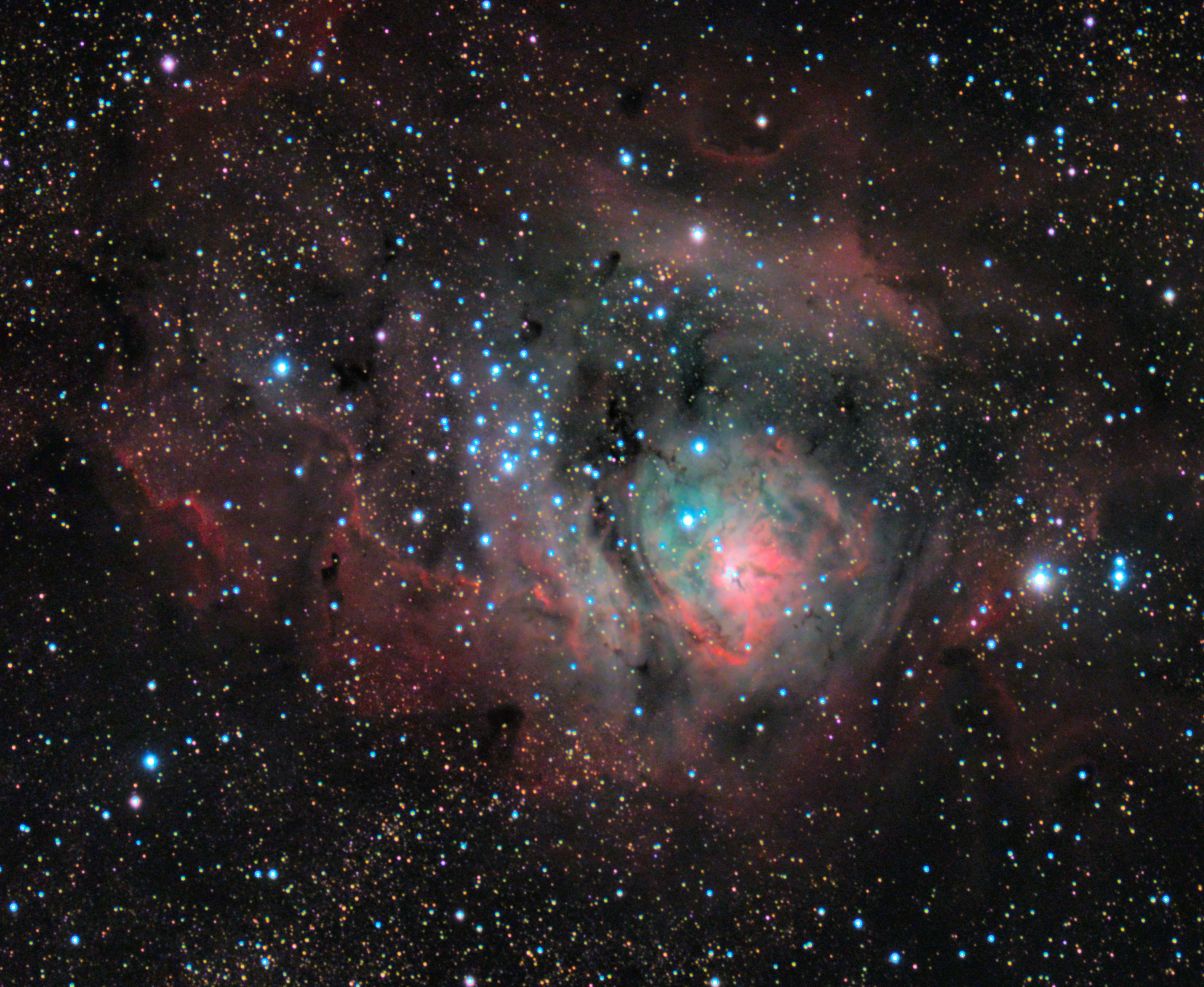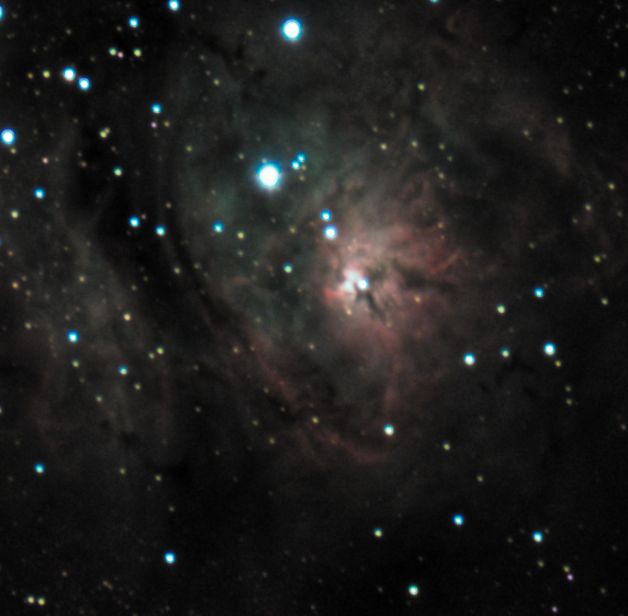The Lagoon Nebula, M8, is another remarkable region where new stars are being formed. It is a giant glowing cloud of interstellar gas lit up by nearby stars. It is divided by a dark lane of dust and it also contains an embedded cluster NGC 6530 whose stars have been newly formed from the nebular material.
The distance to the Lagoon Nebula is variously quoted as being between 4800 and 6500 light years.
The Lagoon Nebula (10 min total exposure June 27, 2020)

The full extent of the Lagoon Nebula covers about three times the area of the full moon. It contains a number of dark globules that are collapsing clouds of protostellar material. Two of the larger ones, B 89 and B296 are pointed out in the notations, but you will see a large number of smaller ones as well, looking like swirls of smoke and dusty knots. (My first impression of the dark lagoon reminded me of one of those air-driven figures that you see wriggling to advertise places like used car lots!)
The brightest of the hot stars that light up the western (right) side of the nebula are 9 Sgr and Her 36, also indicated in the notes for the image below, while the stars of NGC 6530 illuminate the eastern (left) side of the nebula.
The brightest part of the Lagoon Nebula contains a feature known as the Hourglass, a region where vivid star formation is taking place. The image below is enlarged and processed to bring out detail in the brightest portions in an attempt to show the Hourglass.
Inner part of Lagoon Nebula

If you’d like to read more about the Lagoon Nebula you can click here for a Wikipedia article.